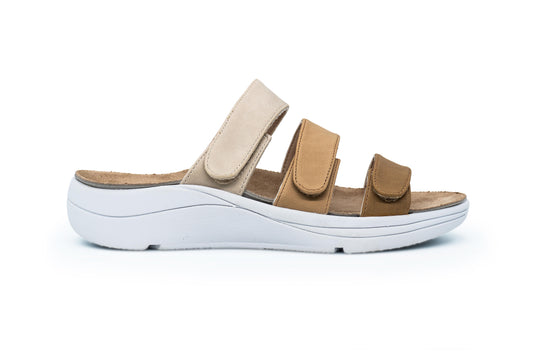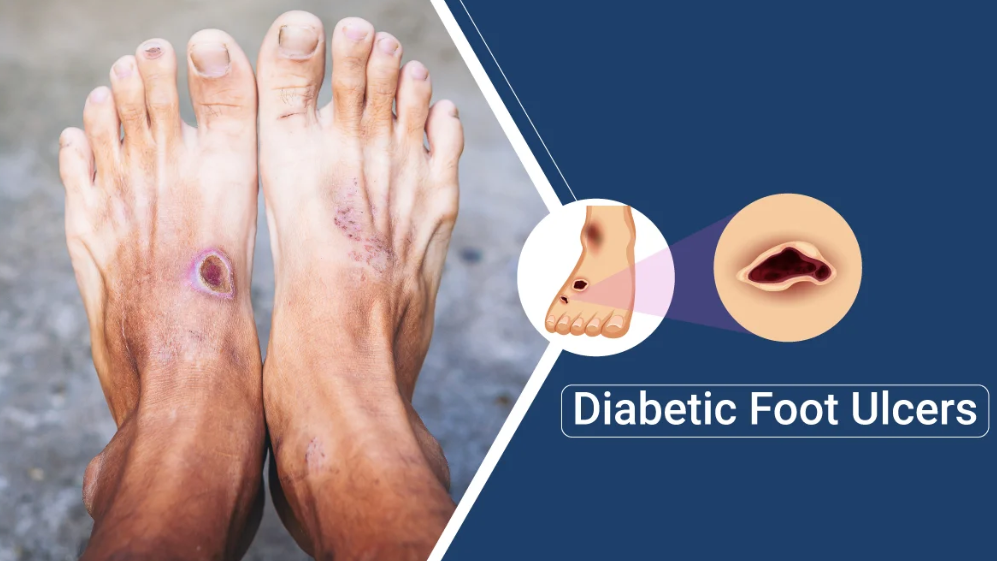Understanding and Managing Diabetic Foot Ulcers: Factors, Evaluation, and Interventions
Diabetic Foot Ulcers are a major concern for individuals with diabetes, affecting a significant number of people worldwide. These ulcers can have severe consequences, such as requiring hospitalisation, amputation, and greatly impacting one's quality of life.
Understanding the factors that contribute to Diabetic Foot Ulcers and taking necessary measures to screen and intervene are crucial in preventing and managing this debilitating condition.

Here are some factors that contribute to the cause:
1. Peripheral Neuropathy
Peripheral Neuropathy is a condition that many diabetic individuals over 60 may experience. It can cause a decrease in sensation in the feet. These factors can make individuals more susceptible to injuries and trauma, potentially leading to the development of foot ulcers.
2. Increased Plantar Pressure
Limited joint mobility and foot deformities can result in heightened pressure on certain areas of the feet, making them more prone to developing ulcers. Dealing with foot ulcers can be quite risky, especially for individuals with diabetes who are exposed to excessive pressure.
3. Coping with Trauma
Foot ulcers can occur in diabetic patients as a result of repetitive trauma, such as friction caused by ill-fitting shoes or injuries. It's important to note that this can result in skin damage.
Here are some factors that contribute to the situation:
1. Atherosclerotic Peripheral Vascular Disease:

Diabetes often leads to vascular complications that greatly affect the lower extremities. When blood circulation is not adequate, it can hinder the healing process of wounds and increase the chances of developing ulcers.
2. Healing Wounds and the Impact of Diabetes:
Diabetes can have a significant effect on the healing process of wounds by affecting collagen cross-linking and matrix metalloproteinase function, both of which play a crucial role in wound healing. Dealing with these disruptions can really complicate the healing process of foot ulcers in diabetic individuals.
3. Immunologic Disruptions:
Diabetes can greatly affect the functioning of polymorphonuclear leukocytes, which play a crucial role in the body's immune response. Dealing with this condition can pose challenges to the healing process of wounds and heighten the likelihood of infections.
4. Fungal infections

Fungal infections of the nails and toe webs can be a concern for diabetic patients, as they have the potential to cause skin disruption and ulcers.
Exploring the Effects and Evaluation:
Foot ulcers can have a significant impact on multiple areas of life, such as physical health, emotional well-being, and social connections. Preventive screening is incredibly important in identifying individuals who may be at risk and taking immediate action to address their needs.
When it comes to screening, there are several factors that need to be evaluated. These include past ulceration, length of diabetes, blood sugar management, vision impairment, and various tests that need to be performed.
Delving into Educational Interventions:
1. Educating Patients: Educating patients about proper foot care practices can significantly reduce the risk of developing ulcers and requiring amputations. It's really important to make sure patients understand the importance of taking care of their feet, including keeping them clean, wearing the right shoes, and getting regular check-ups.
2. Physician Education: Ensuring that clinicians receive proper training and regular reminders is essential to enhancing their foot care practices and ultimately improving patient outcomes. It is absolutely essential to prioritise the provision of adequate care and preventive measures for patients.
Clinical Interventions:
1. Enhancing Glycemic Control: It is essential to maintain optimal glycemic control to minimise the risk of neuropathy and ulceration in people with diabetes.
2. Quitting Smoking: Quitting smoking can greatly decrease the risk of foot ulcers and the need for amputations. Smoking has a negative impact on blood vessels and hinders the healing process.
3. Regular foot examinations by clinicians, especially podiatrists, are crucial for preventing ulceration recurrence and identifying early signs of complications.
4. Discovering the Fascinating World of Custom Footwear and Orthotics:

Wearing the perfect pair of shoes and utilising orthotic devices can significantly reduce plantar pressure and provide essential protection against ulcers for those who are vulnerable.
5. Regularly removing calluses can be beneficial for individuals with diabetes as it helps alleviate pressure and reduces the risk of ulcers.
6. The Importance of Foot Specialists and Multidisciplinary Team Care: When it comes to diabetic foot complications, specialised foot care and multidisciplinary teams are essential in preventing foot ulcers and amputations. They offer comprehensive management to ensure the best possible outcomes.
7. Surgical interventions for preventing foot ulcers in diabetic individuals have shown some potential, but the available evidence on their effectiveness is limited.
In general, it's crucial to acknowledge the potential risks associated with diabetic foot ulcers for individuals living with diabetes. A proactive approach not only enhances the well-being of individuals with diabetes but also eases the burden on healthcare systems.
Uncover our collection at DiabeticShoe.in designed to alleviate foot pain. Don't hesitate to purchase medically approved insoles and shoes for effective foot pain relief!
Check out Prescribed Orthotics for further details








